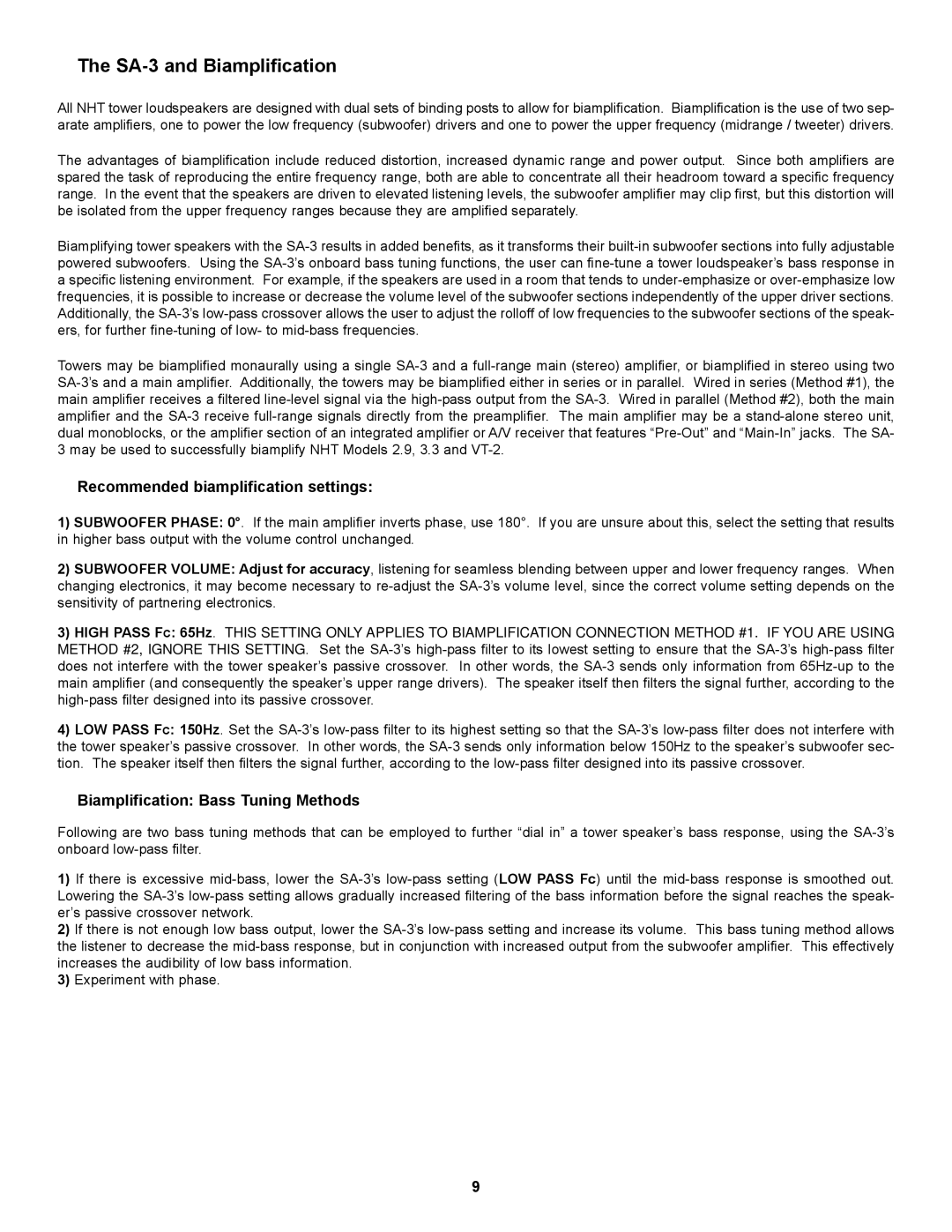SA-3 specifications
The NHT SA-3 is a notable entry in the world of high-performance audio speakers, recognized for its impressive design, advanced technologies, and exceptional sound quality. Targeted primarily towards audiophiles and serious music enthusiasts, the SA-3 speaker harnesses innovative engineering to deliver an unmatched listening experience.One of the main features of the NHT SA-3 is its unique cabinet design. Constructed using high-quality materials, the cabinet is designed to minimize resonances and unwanted vibrations, ensuring that sound reproduction remains pure and undistorted. The design philosophy behind the SA-3 emphasizes clean lines and aesthetic appeal, making it a suitable addition to any home or studio setting.
Another defining characteristic of the SA-3 is its driver configuration. The speaker utilizes a sophisticated woofer and tweeter setup, which combines a robust 5.25-inch polypropylene cone woofer with a highly sensitive 1-inch silk dome tweeter. This combination allows the NHT SA-3 to produce a wide frequency range, from deep, impactful bass to crisp, clear highs, making it versatile for various music genres and audio content.
In terms of technology, the NHT SA-3 integrates advanced crossover circuits that optimize the performance of its drivers. These crossovers ensure seamless transitions between the woofer and tweeter, resulting in an accurate and coherent soundstage. Additionally, the speaker incorporates high-quality binding posts, allowing for secure connections and compatibility with a variety of amplifiers and audio equipment.
The NHT SA-3 also excels in its power handling capabilities. With a recommended amplifier power range, the speaker can comfortably handle a substantial amount of power without compromising on performance, making it suitable for both casual listening and more demanding audio applications.
Moreover, the SA-3 has been engineered for both wired and wireless connectivity, allowing it to integrate seamlessly into modern audio setups. This flexibility ensures that users can enjoy their favorite music from various sources while retaining high sound quality.
Overall, the NHT SA-3 stands out in its class for its exceptional clarity, dynamic range, and aesthetic appeal. With its combination of advanced technologies, premium materials, and thoughtful design, the NHT SA-3 is a compelling choice for anyone looking to enhance their audio experience. Whether used in a home theater or a music studio, this speaker promises to deliver performance that will satisfy even the most discerning listeners.
